It’s very common to suffer some erectile dysfunction after prostate cancer. Either from cancer itself or from treating it, both with surgery or radiotherapy.
As you know, the rate of ED depends on the type treatment. Surgery has the highest rate of ED, while brachytherapy has the lowest.
Prostate Surgery
There are two ways to perform prostate surgery: nerve-sparing or non-nerve sparing.
Some time ago there was only non-nerve sparing prostatectomy. It was an open surgery and surgeons didn’t preserve the nerves that run next to the prostate. These two nerves are in charge of penis erection, so after damaging them, all the patients suffered erectile dysfunction.
Then came nerve-sparing surgery, which is made through laparoscopy. This technique preserves the nerves, so the rate for erectile dysfunction is much lower. Still, some patients do suffer it, around 40% of them.
Even for them, hope is not lost. After a nerve-sparing surgery, it’s much easier to recover with help (drugs, usually).
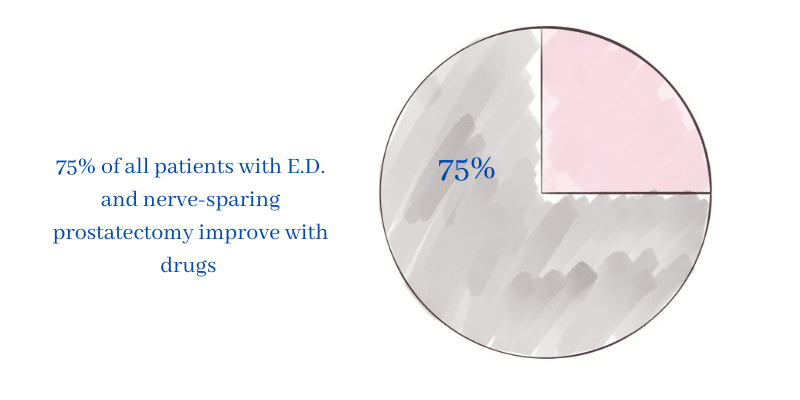
Radiotherapy
Unlike surgery, the thing with radiotherapy is you don’t get erectile dysfunction right away. It takes time, sometimes months or even years. So you’ll probably be all right at the beginning.
After a while, around 50% of patients will suffer erectile dysfunction.
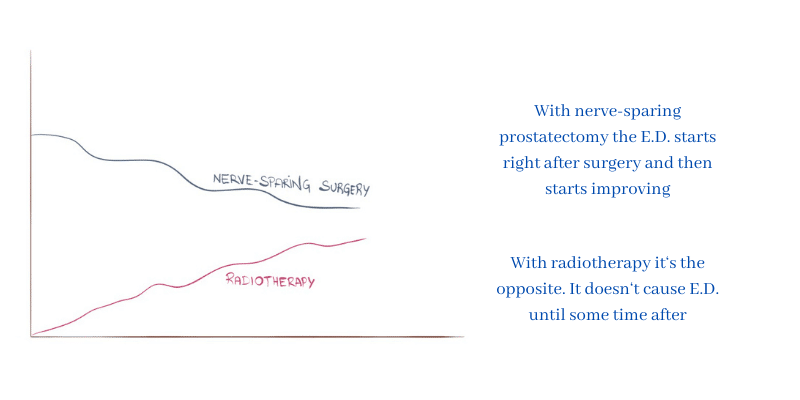
Brachytherapy
Brachytherapy consists of some small seeds that are placed inside your prostate. They are radioactive so they “kill” the tumor little by little every day.
With brachytherapy, around 25-40% of patients get erectile dysfunction. In this case it also takes time to develop.
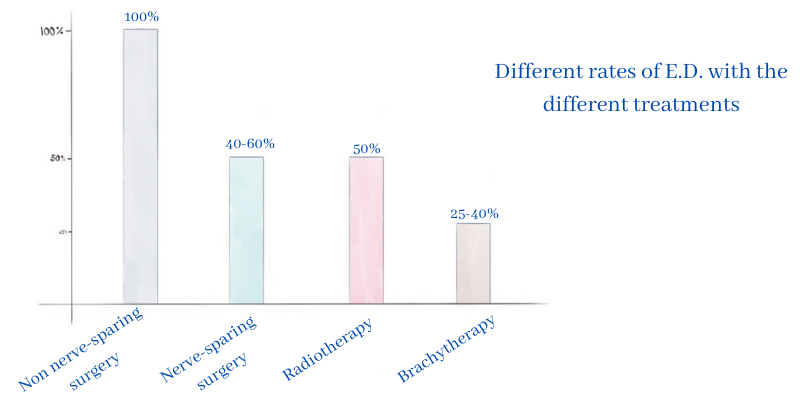
How do you treat erectile dysfunction?
There are several options, from drugs to surgery. You want to start with the least aggressive options (drugs) and, if they are not enough, consider the rest (penis injections or surgery).
1. Oral PDE5 inhibitors
The most well-known drug for ED is Viagra (also called Sildenafil). You take it 1 hour before sex and the effect lasts for around 4 hours.
There are other PDE5 inhibitors like Cialis, Levitra or Stendra.
These drugs are usually the first option to try because they are the least aggressive. And they are very effective, too.
The way they work is they cause vasodilation in the penis: the arteries get wider and then more blood goes into your penis, causing an erection.
2. Intracavernosal injections
If drugs don’t work, the next step are intracavernosal injections. You inject them directly into one side of your penis.
One of them is Caverject. It comes in 20 mcg or 40 mcg. With the help of your doctor, you’ll have to find the right dose for you.
When you use Caverject, you must switch the side of the penis every time you inject it, you don’t want to get hematomas and fibrosis all in one side.
The most frequent side effect is pain, but is usually tolerable: only 3% of patients stop taking it because of pain.
Some other side effects are:
-
- prolonged erection (4-6 hours) – 4%
- priapism (> 6 hours) – 0.4%
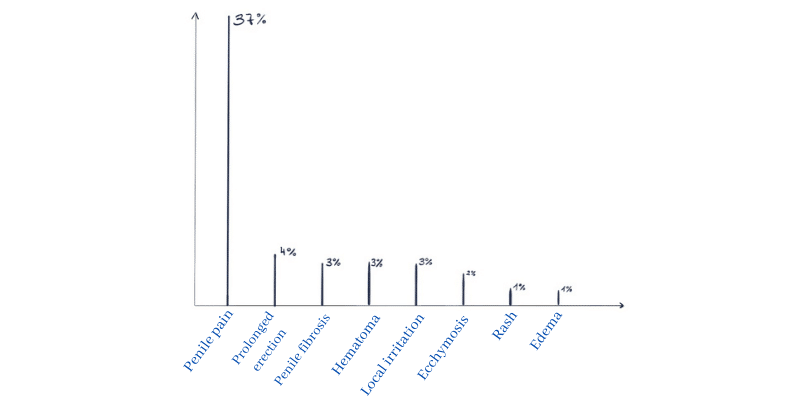
3. Mechanical devices: penis pump
Also called vacuum pump, it consists of a plastic tube that fits around your penis with a pump attached to it and a ring.
When you activate the pump it “sucks” blood into your penis, filling it and giving you an erection. After the erection, you will place the ring in the base of your penis. That way blood will remain there for some time, allowing you to penetrate and have sex.
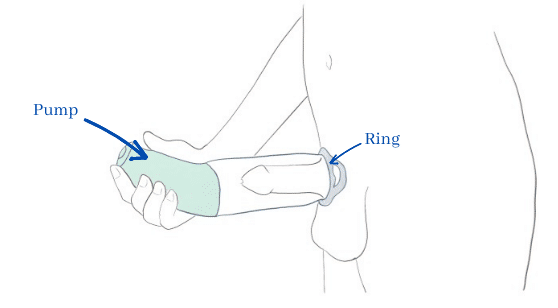
Yes, it can be a pain in the butt to use. But it is a good option for some people.
It is cheaper than other options and it doesn’t require any surgeries or injections.
It’s especially a good option for patients with a nerve-sparing surgery. As we explained, some of them have erectile dysfunction but will recover in the next 2 years. So you want to give them a chance to recover their erections.
For them, this device is great because it also serves as a rehabilitation technique. If after 2 years they don’t recover their erections, they can then think about more aggressive therapies, like surgery.
4. Surgery: penile implant
This option should always be the last option, because it’s the most aggressive. The most frequent implant is the inflatable implant.
It has 3 components:
– one fluid reservoir located in the abdomen. It keeps the fluid that will fill the implant and make it hard.
– one valve and a pump located in your scrotum. It acts as a switch to activate the pump.
– the two inflatable cylinders that go inside your penis. They work as the “new” penis, inside the skin of course.
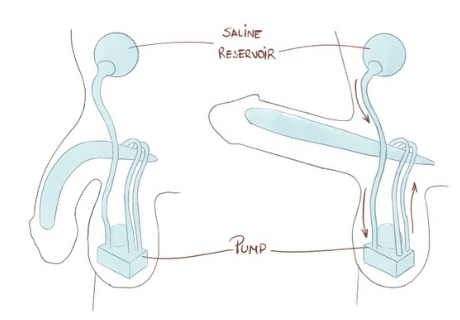
When you need an erection you just press the pump through the skin of your scrotum. That way, saline will fill the cylinders, making them rigid. When you finish, you just press the valve and release the fluid, which goes back into the reservoir.
There are some risks associated with a penis implant, like excessive bleeding, infection and formation of scar tissue.
Leave a Reply